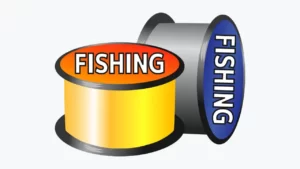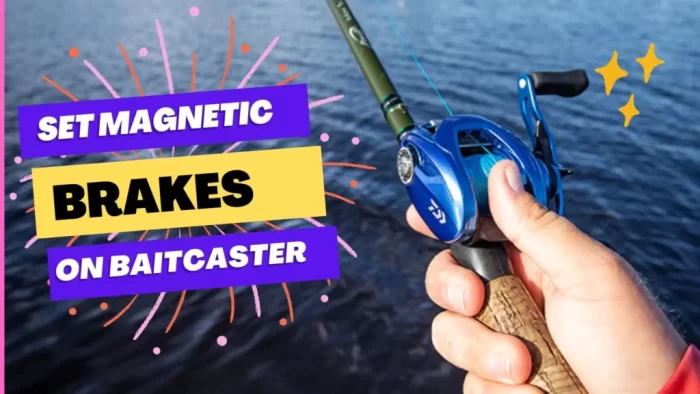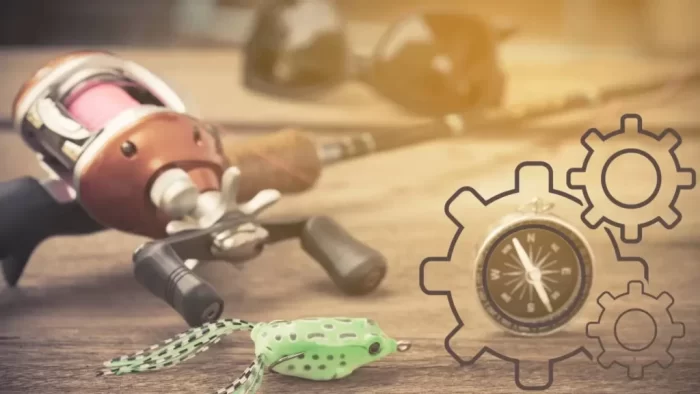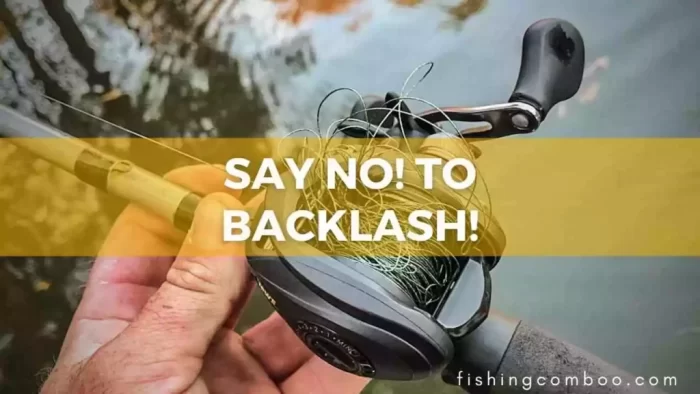
Tuning a baitcaster reel is essential for maximizing your fishing experience. A properly tuned baitcaster will cast accurately and smoothly, provide better control over lures, and improve overall performance. By tuning your gear correctly, you can shake off the frustration of backlashes, birds’ nests, and poor casting distances.
You may be overwhelmed when figuring out how to tune a baitcaster, but with a few simple steps and minimal effort, you can get the job done for optimal reel performance.
To tune a baitcaster, it’s important to understand how different parts of the reel work together, so let’s start with the basics.
table of contents
- 1 How to Tune a Baitcaster – Comprehensive Guide with Tips
- 2 Understanding the Basics of Baitcaster’s Reel
- 3
- 4 Spool
- 5
- 6 The Spool Tension Knob
- 7
- 8 Line Guide
- 9
- 10 Fishing Line
- 11
- 12 Handle
- 13
- 14 Brake System
- 15
- 16 Drag System
- 17
- 18 Gear Ratio
- 19
- 20 Additional Tips to Prevent Tangles
- 21
- 22 Advantages of Tunning a Baitcaster
- 23
- 24 Disadvantages of Untuned Baitcaster
- 25
- 26 Frequently Asked Questions (Faq’s)
How to Tune a Baitcaster – Comprehensive Guide with Tips
Understanding the Basics of Baitcaster’s Reel
If you’re an angler looking to get the most out of your bait caster, it’s important to understand how each component on the reel works together. The baitcasters are more technologically advanced than spin casters due to their design and construction, which includes the spool, frame, line guide, and handle.
As a rule of thumb, the spool and bearings are responsible for controlling rotation, while the frame and handle make up the bulk of the reel’s structure. The line guide is the last piece of the puzzle and keeps the line straight from the reel spool to your target. Understanding how each part of the baitcaster works is key to properly tuning up your gear.
Now we’re going to discuss some salient parts of the baitcaster and then discuss ways of a tune-up.
Important Components Of a Baitcasting Reel
- Spool: Responsible for controlling rotation.
- Line Guide: Keep the line straight from the spool to your target.
- Fishing Line: Used to cast your lure into the water.
- Handle: Used to cast and retrieve lures or bait.
- Braking System: Control the speed of rotation before and during casting.
- Drag System: How much line can be removed before the spool stops spinning?
- Gear Ratio: How many revolutions the handle makes for each rotation of the spool?
- Spool Tension: How tightly the line is wound onto the spool.
Spool

The spool is a key component to understand when tuning your baitcaster. It’s responsible for controlling the rotation of the baitcasting reel, and its settings largely determine how many backlashes or bird nests you will have during casting.
Generally speaking, if your spool setting is too tight, it will cause excess friction on the line, leading to backlashes and decreased casting distance. On the other hand, if it’s too loose, it could cause line tangles or a bird’s nest before you even begin casting.
For most baitcasters, the ideal spool setting is between tight and loose. Depending on the reel manufacturer, this setting may be labeled as “medium” or “normal,” though some baitcasting reels do not have this option. Trying different tension settings on your reel will help you figure out what works best.
The Spool Tension Knob
The next important component to understand is the spool tension knob. This knob is used to adjust the tightness of the line on the reel spool and can help reduce backlashes and increase your casting distance.
When you adjust your tension knob, it’s best to begin with, a slightly tighter setting. This will help reduce the chances of backlashes and increase the accuracy of your casts. However, a slightly looser tension setting may be necessary to maximize distance if you use light lures.
It’s situated on the side of the reel and can be adjusted with a simple twist or turn. Find your perfect tension setting by experimenting with different settings and seeing what gives you the best results.
Line Guide
This piece is responsible for keeping your fishing line in a straight path from the reel spool to your target. How well it performs its job largely determines how accurately and far you can cast.
When tuning up your bait caster, you want to ensure that the line guide is spinning freely and not rubbing on the spool. If it is, this could be causing friction on the line, making casting more difficult.
The best way to check if your line guide is functioning correctly is to spin the handle without any line attached to the baitcasting reel. If there’s no resistance or friction when you do this, then your line guide is set up properly.
Fishing Line

The type of line you use is just as important as any other setting. Different line types have different levels of stretch and other properties that can affect your casting distance and accuracy.
For baitcasters, using a line with low stretch is best. Monofilament lines are generally popular as they stretch less than braided or fluorocarbon lines, allowing for more accurate and longer casts.
At the same time, using a line with too low of a stretch can also cause problems. If you use a line with little to no stretch, you can easily get backlashes and tangles if your spool tension is off.
Learn More: How to Put Fishing Line on a Baitcasting Reel
Handle
How you grip and hold the handle can have an effect on how far and accurately you can cast. Make sure to hold the handle tightly enough that it doesn’t slip but not so tight that your hand hurts. It’s also important to keep an even amount of pressure on the handle while casting to ensure that your line is released evenly from the reel spool.
It’s also important to ensure that your handle isn’t bent or damaged in any way, as this can lead to problems with accuracy and casts. If the handle is bent or damaged, it’s best to replace it.
Brake System
The brake system helps control the speed and tension of your line as it is released, which can affect how accurately and far you cast.
Generally speaking, the heavier the lure, or the faster you want to retrieve it, the tighter your brake setting should be. This will help prevent backlashes and increase casting accuracy.
On the other hand, a looser brake setting may be necessary if you’re using light lures or want to cast farther. Try out different settings until you find the combination that works best for your setup.
Increase Your Knowledge: How to Cast a Baitcaster with a Light Lure
Different baitcasting reels come with different brake systems, so you may need to familiarize yourself with the system on your particular reel. Some common braking systems include centrifugal, magnetic, and hybrid brakes.
Magnetic Brakes
Magnetic brakes are the most popular brake type for baitcasters as they offer more accuracy and precision than centrifugal brakes. The magnets in a magnetic brake system generate a stronger drag force, which helps keep the line from overrunning when casting.
In addition, these brakes can be easily adjusted by turning the magnet strength dial on the outside of the reel. The higher the setting, the more braking power you have, allowing for more precise casts.
Centrifugal Brakes
Centrifugal brakes use friction to generate drag and slow down the spool as you cast. This type of brake is adjustable by adding or removing weights from the brake blocks.
The more weights you add, the greater drag you can apply, which will help keep the line from overrunning when casting. The drawback is that centrifugal brakes are less precise than magnetic brakes and may require some trial and error to get the right setting.
Hybrid Brakes
Hybrid brakes offer the benefits of both centrifugal and magnetic brakes. With this reel, you can adjust the brake by turning a dial to switch between centrifugal or magnetic brakes. This gives you the flexibility to use both systems depending on the type of lures and line you’re using.
Best Braking System for Baitcaster
When choosing the best braking system for your needs, you must consider what type of angler you are. For casual anglers who don’t often cast or make long casts, a centrifugal brake is probably the best choice, as it requires minimal adjustment and maintenance.
For more experienced anglers who make long casts regularly, a magnetic brake is a way to go, as it provides more accuracy and control. Finally, anglers looking for the most flexibility should opt for a hybrid system that allows them to switch between different braking systems depending on their needs.
Drag System

The drag system helps control your resistance when reeling in a fish. If your drag is too tight, it can cause line breakage if the fish makes sudden movements. You may lose the fish if it is too loose, as it could swim away with your line.
For baitcasters, it is best to set the drag system to a medium setting so that the reel can handle sudden movements from the fish while giving you enough control when reeling in. How you adjust your drag system will differ based on the type of reel you have, so look to your manual or the manufacturer’s website for guidance.
Gear Ratio
The gear ratio refers to how much line your reel collects per turn of the handle. Higher gear ratios offer faster retrieval rates but less power to pull in the fish. Lower gear ratios offer more power to reel in the fish but with slower retrieval rates.
Read About: Is Baitcaster Good for Trout?
For baitcasters, choosing a gear ratio that balances speed and power is best. This will vary depending on your fishing style and the type of lures you use. Low gear ratios are better suited for heavy baits, while high ones are better for light lures.
Additional Tips to Prevent Tangles

Check the Brakes Before Cast
It is essential to check that your brakes are appropriately set when adjusting your bait caster. This can be done by opening up the reel’s side plate, adjusting the centrifugal and magnetic brake systems, and then reassembling it until you get it right.
Use Heavier Line
Heavier lines have a more consistent stretch, allowing for better accuracy in casting. Thinner lines tend to be harder to control and may cause the line to backlash or tangle.
Increase the Drag
Increasing the drag of your baitcaster helps with line control by acting as a buffer against sudden movements while you’re casting. Too little drag and the line will fly off, whereas too much drag can hinder long casts. Adjust your drag accordingly depending on the type of fishing you’re doing.
Invest in a High-Quality Reel
High-quality reels are more accurate and reliable than lower-quality ones. Quality baitcasting reels will have better brakes, drag systems, and bearings, which can help reduce the potential for tangles.
Read Our Reviews: 10 Best Baitcaster Combos in 2023
Practice Casting
The more you practice casting, the better your control will be over your line. Find an open spot with plenty of room to cast to perfect your technique.
Clean Your Reel Regularly
A clean baitcaster reel will help reduce tangles and improve casting accuracy. Clean the exterior of the reel, as well as the interior parts such as spools and bearings. This will help ensure that your line is tangle-free and ready for action every time you cast.
By taking these steps, you can avoid line tangles and maximize your reel’s performance.
Advantages of Tunning a Baitcaster
Tuning a reel comes with numerous benefits. Here are just some of the advantages:
- Improved Accuracy: When properly tuned, a bait caster casts farther and more accurately than an untuned one.
- Increased Casting Distance: By adjusting the right settings, you’ll be able to cast farther than with an untuned one.
- Enhanced Reel Performance: This will help you get the most out of your reel and ensure it performs at its best.
- Increased Control: When you set up a baitcaster properly, you can adjust the settings to fit your style of fishing and give yourself more control.
- Smoothness: Tuning helps reduce the backlash and provides a smoother casting experience.
- Versatility: You can use different settings to suit your fishing conditions and target different fish species.
Disadvantages of Untuned Baitcaster
Using an untuned baitcaster can lead to multiple issues. Some of these include:
- Poor casting distance and accuracy
- Excess line twist or backlash due to improper spool tension
- Issues with the brake settings, resulting in overrunning of the spool when casting heavy lures
- Difficulty controlling the lure when fishing in windy conditions
Frequently Asked Questions (Faq’s)
Why does my baitcaster keeps Backlashing?
Backlashing can occur when the spool of a bait caster is spinning too quickly, usually due to improper brake settings. This can cause the line to become tangled around the spool, making it difficult to cast or retrieve your lure.
To prevent backlashing, ensure your brakes are properly set and adjusted for the weight of the lure you’re using. If this doesn’t work, try using a heavier line that has more stretch to help with controlling the spool.
How do you fine tune a bait caster?
Fine-tuning your bait caster requires some practice and patience. Start by setting up the reel to the manufacturer’s recommended settings for the line type, lure weight and fishing conditions you’re using. Once that’s done, make small brake settings and spool tension knob adjustments until you find the best setup.
What is a good Baitcaster ratio?
The ideal baitcasting reel ratio depends on the type of fishing you’re doing and the weight of your lure. If you want to retrieve your lure faster, go for a higher gear ratio. However, if you’re expecting to fight larger fish, choose a lower gear ratio to have more torque.
Some common ratios are 6:1 for light lures, 7:1 for medium-weight lures, and 8:1 for heavy lures. It’s important to experiment with different ratios until you find the one that works best for your style of fishing.
Final Words
A baitcasting reel is a sophisticated piece of equipment that, when used correctly, can give you an edge over other anglers. This article covers the essentials of bait-caster reel tuning. We also divulged industry secrets for using your baitcasting reel to its fullest potential.
Remember, a fine-tuned bait caster reel will assist you in catching more fish and enjoying your time while fishing!! Do you have any questions about tuning that we still need to answer in this blog post? Let us know in the comments below!





